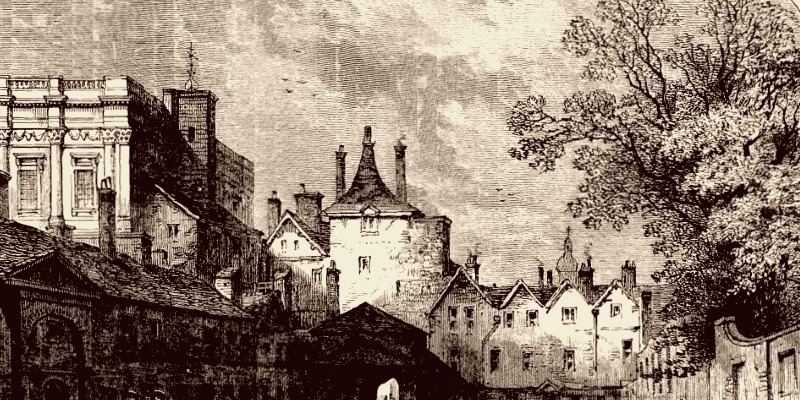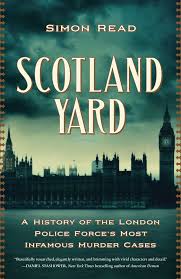On 14 June, prompted by the Good fiasco, Commissioners Mayne and Rowan sent to the Home Secretary a ‘Memorandum relative to the Detective Powers of the Police’. It laid out plans for a new branch of Scotland Yard comprised of two detective-inspectors and eight sergeants. The document has been lost to history, but in a follow-up letter they made clear that when not working a case, members of the proposed branch were to learn ‘the habits, haunts, and persons or parties known or suspected to live by the commission of crime, so as to prepare themselves for tracing and detecting offenders when any case occurred.’ The Home Secretary gave the proposal his stamp of approval for six sergeants, rather than eight, in the name of economy.
Although the Yard kept the plan under wraps, the press caught wind of it on 12 July when The Morning Post, under the headline ‘New Police Arrangement’, reported:
Several cases having lately occurred, in which criminals have not been taken into custody so promptly as the public had a right to expect, the commissioners of police have arranged that a new company shall immediately be raised out of the present police, to be called the ‘Detective Force’ We doubt not that the choice of the commissioners will fall upon men whose vigilance and industry in their vocation will entitle them to the preferment.
On Monday, 15 August 1842, the Yard announced in its internal Police Orders the creation of its plainclothes Detective Branch – the first of its kind.* Inspector Nicholas Pearce oversaw the new detectives with Inspector John Haynes, a ten-year veteran and one-time chemist, as his second-in-command.
In 1840, Haynes successfully tracked down a team of looters who picked clean a wrecked ship off Margate along England’s southeast coast. He calculated how fast their horse-drawn carriage could travel and deduced from that what inns they stayed at on their run to London. As the two senior detectives, Pearce and Haynes earned a yearly salary of £200 – ‘£84 more than uniformed officers’. The six sergeants included veterans of the Westwood, Good and Russell murder investigations. Two constables recently promoted to Sergeant, including Jonathan Whicher, destined to become the most celebrated and then ostracized detective of his day, rounded out the team. The sergeants earned £73 a year, £10 more than their uniformed colleagues.
The branch, in its early days, went through several personnel changes that saw Pearce promoted to Superintendent of F (Covent Garden) Division and Inspector Charles Frederick Field named Senior Detective. The press, which had long criticized Scotland Yard for its lack of investigative prowess, initially paid it little attention. Some histories contend it’s because the Yard and Home Office made no public announcement, while another argues it ‘was more probably due to the dearth during this period of spectacular cases’. Not ‘until the end of the decade’ did the Detective Branch ‘come into the news with a crime of the more sensational sort.’
In 1849, a cholera outbreak ravaged London ‘with a large scale loss of life’. More than 14,000 people in the capital succumbed to violent cramps, vomiting and severe diarrhea after drinking contaminated water from the city’s pumps.
On Monday, 24 September, The Morning Chronicle ran an article by journalist Henry Mayhew under the headline ‘A Visit to the Cholera Districts of Bermondsey.’ Along ‘the southern shores of the Thames’, a hotbed of disease, some 6,500 people had died ‘within the last three months’. Mayhew wanted to see for himself the conditions that bred such a ‘fatal fury’. ‘The masses of filth and corruption round the metropolis are, as it were, the nauseous nests of plague and pestilence,’ he wrote:
As we passed along the reeking banks of the sewer the sun shone upon a narrow slip of water. In the bright light it appeared the colour of strong green tea, and positively looked as solid as black marble in the shadow – indeed, it was more like watery mud than muddy water; and yet we were assured this was the only water the wretched inhabitants had to drink. As we gazed in horror at it, we saw drains and sewers emptying their filthy contents into it; we saw a whole tier of doorless privies in the open road, common to men and women, built over it; we heard bucket after bucket of filth splash into it, and the limbs of the vagrant boys bathing in it seemed, by pure force of contrast, white as Parisian marble.
Article continues after advertisement
Against this nauseating backdrop, the Detective Branch tackled its first major case. For London’s weary inhabitants, the sordid love triangle that became known as ‘the Bermondsey Horror’ proved a welcome distraction from endless stories of disease. ‘At this time,’ reported Punch that September, ‘refined, civilized, philanthropic London reeks with the foulness of the Bermondsey murder.’
It all began when colleagues at the London Docks reported Patrick O’Connor missing. An official with Her Majesty’s Customs department, he was last seen by an acquaintance on the evening of Thursday, 9 August, strolling across London Bridge from the Surrey side towards Bermondsey. The two exchanged brief pleasantries, during which O’Connor mentioned he planned to spend the evening with a couple called the Mannings. He then bid farewell and vanished into the ether. ‘Sinister apprehensions began to be entertained respecting his fate’ when, by Monday, he had not shown up for work.
O’Connor made no secret of his friendship with the Mannings, although it seemed an odd relationship. Marie Manning, née De Roux, was born in Switzerland in 1821. As a lady’s maid to the aristocracy, she grew accustomed to the sumptuous surroundings of country manors, the comfort of fine clothes and the trappings of high society. She benefitted from the generosity of her mistresses, acquiring in the course of her service ‘11 petticoats, 9 gowns, 28 pairs of stockings, 7 pairs of drawers and 19 pairs of kid gloves’. Her outfit of choice was a black satin dress that accentuated her figure. She was a pleasure for the eyes with her long, dark hair. ‘She. . . is an extremely fine woman,’ notes one contemporary account, ‘handsome, and of almost muscular stature.’
She moved to England in July 1846, adopted the more English-sounding name Maria, and went to work ‘in the household of the Duchess of Sutherland’. Along the way she met O’Connor. The fifty-year-old Irishman ‘was excessively fond of money and endeavoured at all times to increase his store.’ He had in recent years acquired a reputation for wealth through shady money lending and become known as ‘The Customs’ money lender’. His stature made him an attractive proposition – one who enjoyed the ‘society of ladies.’ Although he and Maria shared a mutual attraction, he never proposed. She instead married Frederick Manning, a one-time guard for the Great Western Railway Company, in May 1847, believing he was due a substantial family inheritance.
A step down from the financially secure O’Connor, Manning was not, as he claimed, destined for wealth. A failed publican, his lack of business acumen drove the couple to the financial brink. She kept them afloat as a dressmaker, but just barely. They moved into a respectable home at No. 3, Miniver Place, Bermondsey, and struggled to maintain appearances. ‘The Mannings, through their extravagance and dissipation,’ states one report, ‘had got rid of nearly all their property, with the exception of the furniture, and their circumstances became critical.’ Through all this, O’Connor stuck around and paid the couple frequent visits if only to be close to Maria. Neighbours often spotted the two smoking ‘in the back parlour window’ and ‘the small garden at the rear of the house’. Friends urged O’Connor to keep his distance, but he dismissed their concerns, to his great detriment.
Police Constable John Wright of M (Southwark) Division, accompanied by one Mr Flynn, O’Connor’s cousin, questioned Maria at her home on Monday, 13 August, as to the missing man’s whereabouts. She claimed she had invited him to dinner several nights prior but he never showed up. ‘Poor Mr O’Connor,’ Maria said. ‘He was the best friend I had in London.’ Maria’s response struck Wright and Flynn as strange, as there was nothing yet to suggest O’Connor had met with foul play. They thanked her for her time and proceeded to O’Connor’s rented room at 21, Greenwood Street, where the landlord let them in. In a trunk, they found the cashbox in which O’Connor kept his cash and railway share certificates. It was empty.
When police returned to the Manning residence the next day, they found it abandoned. ‘The nest was there but the birds had flown.’ Police Constables Henry Barnes and James Burton returned three days later on Friday, 17 August, to search the place. Barnes noticed a damp mark on the kitchen floor between two flagstones. Closer inspection revealed the stones had recently been moved. The two constables pried the heavy stones up with a crowbar to expose a layer of earth beneath. ‘I proceeded to remove a portion of the earth,’ Barnes said. ‘When I had got down about a foot, I discovered the toe of a man – and when I got about eighteen inches down, I discovered the loins of a man, the back of a man.’
The constables cleared away the remaining earth to reveal the naked body of a man, hogtied, covered in lime and lying face down in a pit about three-feet deep, two and a half feet wide, and six feet long. The head, slightly lower than the torso, was caked in dried blood. Breathless from their excavation, they hauled the corpse from its makeshift grave and laid it, still bound in heavy cord, on the kitchen floor. Two surgeons joined them at the house. Their examination found the victim had been shot above the right eye and the back of his skull caved in by at least sixteen blows from a sharp, heavy instrument. ‘The fractures were quite sufficient to have caused death,’ they reported. ‘And no doubt the wound from the bullet would have eventually caused death.’ One of the surgeons removed a set of false teeth from the corpse’s mouth. Checking with dentists, the Yard soon found one in Osborne Street, Whitechapel, who had sold the teeth to O’Connor.
In reporting the murder, the press dredged up Greenacre and Good and argued the nation had been scared ‘from its propriety’ by the savagery of O’Connor’s death. The Detective Branch, under pressure to quickly resolve the matter and not yet tested to such a degree, moved with surprising rapidity. Detective Sergeant Frederick Shaw began knocking on doors in the Mannings’ neighbourhood and learned Maria was seen getting into a cab on the afternoon of Monday, 13 August with three large trunks. One eagle-eyed neighbour provided the hackney-cab number, 1186. Shaw traced the driver, a man named Kirk, who remembered Maria and her excessive amount of luggage. He said she directed him to the London Bridge terminus, where she deposited two of the trunks in the luggage office under the name Mrs Smith. She next asked to be dropped off at the London and North Western Station in Euston Square, which Kirk did at quarter to six that evening. He watched her disappear into the crowd with the remaining trunk and a carpetbag.
Shaw returned to Scotland Yard and reported his findings to Inspector Haynes. In the early morning hours of Tuesday, 21 August, detectives located the trunks left in the cloakroom of the London Bridge terminus. Both pieces of luggage had a white label attached. Scrawled across one in green ink was ‘Mrs Smith, passenger to Paris, to be left till called for’. Across the other was ‘Mrs Smith, passenger, to be left till called for’. Haynes and his men forced the trunks open and found ‘a quantity of wearing apparel’ – including a bloodstained gown – marked with the name De Roux, ‘a quantity of articles belonging to the deceased Patrick O’Connor’ and several letters from O’Connor to Maria.
Haynes hurried to the London and North Western Station and began asking porters and ticket-takers if they’d encountered anyone matching Maria’s description and going by the name of Smith. The odds played in his favour. He learned ‘a female passenger, whose luggage was marked with the name of Smith, had left the Station on the morning of Tuesday the 14th, by the 6:15 a.m. train, having booked herself through to Edinburgh in a 1st class carriage’.
Haynes pushed his way through the crowd to the station’s telegraph office. Telegraphy was first used to capture a criminal in 1845, when police in Berkshire learned John Tawell, wanted for murdering his mistress, had fled by train to London. Much to the fugitive’s bad luck, ‘he was travelling along one of the only stretches of railway in the world to have telegraph wires running beside the railway lines.’ A message, alerting police and describing Tawell, was telegraphed to Paddington Station, where he was arrested upon his arrival. ‘Had it not been for the efficient aid of the electric telegraph, both at Slough and Paddington,’ reported The Times ‘the greatest difficulty, as well as delay, would have occurred in the apprehension.’
By the time Maria Manning fled by train to Scotland, electric telegraph connected ‘about a third of the railway network’ across Britain. Presently, from the North Western Station’s telegraph office, Inspector Haynes sent a message through to Edinburgh addressed to the city’s superintendent of police, cluing him into the situation and providing a description of Maria. All he could do now was be patient. He had ‘scarcely arrived at Scotland Yard’ when a messenger boy delivered the telegraphed response from Superintendent Richard Moxey. Maria Manning had attempted that very morning to sell O’Connor’s railway shares to a local stockbroker who recognized the numbers on the certificates from a printed police bulletin. She was now in custody.
Moxey put Maria on a train under escort and had her back in London three days later on Friday, 24 August.
Frederick Manning’s whereabouts remained a mystery. ‘Every day that passes diminishes the chance of his arrest,’ The Times unhelpfully pointed out, ‘and unless the most strenuous exertions are now made a deed of the most extraordinary atrocity may be suffered to go unpunished.’ The couple who killed together didn’t stay together. Maria told police her marriage to Frederick was a volatile and unhappy one, strained as it was by financial matters. The day she fled, Frederick had left the house to pawn their furniture. Maria, seeing her chance, took off with the railway shares and cash she’d taken from O’Connor’s room, leaving Frederick with the proverbial shirt on his back.
On Thursday, 23 August, coincidence and luck intervened when the Yard received a wire from the Crown Solicitor in the Channel Islands off the French Normandy coast. A local woman who knew Manning had seen him on a steamer the previous week travelling from Southampton to Jersey. At the time, the murder had yet to be discovered, so Manning’s presence on the boat was no cause for alarm. The wire, dated Saturday, 18 August, had taken five days to reach London. Haynes, fearing Manning might be making a run for France, sent Sergeant Edward Langley to put an end to the chase. Langley traced Manning to a rented room in a cottage called Prospect House on Jersey and took him by surprise on the night of 27 August. The two men knew each other by sight. The detective had previously investigated ‘extensive robberies’ on the Great Western Railway line and interviewed Manning, who, employed as a railway guard at the time, had been a suspect.
‘Ah, sergeant, is that you?’ Manning said when Langley entered his room. ‘I am glad you are come. I know what you are come about. If you had not come, I was coming to town to explain all. I am innocent!’
Langley ordered Manning out of bed and told him to get dressed.
‘Is the wretch taken?’ Manning said as he pulled his clothes on. ‘She is the guilty party. I am innocent as a lamb.’
He had a lot to say and wasted no time blaming Maria. She ‘had caused the grave to be dug some time before,’ he said. On the night of the murder, she had laid the table for dinner and ‘invited O’Connor downstairs to wash his hands.’ As O’Connor did so, Maria snuck up from behind and shot him in the head. Of O’Con- nor’s multiple skull fractures, Frederick had nothing to say – but he expressed continued satisfaction with Maria’s arrest, as she had left him ‘in total ignorance of her destination, without money’.
___________________________________
















